One of the most common on-board diagnostic (OBD) trouble codes is the P0137 code. What exactly does code P0137 mean?
The P0137 code refers to an O2 Sensor Circuit Low Voltage (Bank 1, Sensor 2). This indicates that the O2 sensor for the second oxygen sensor on Bank 1 fails to increase voltage output of more than .21 volts. It is an indication that the oxygen in the exhaust is excessive.
Read on to learn more about OBD code P0137 and how to fix this issue.
P0137 Code

P0137 code pertains to a vehicle issue involving the O2 Sensor Circuit Low Voltage (Bank 1, Sensor 2). The O2 sensor, particularly for Bank 1 Sensor 2, ceases to increase voltage output of over .21 volts. The oxygen level in the exhaust is too high.
If and when the engine control module (ECM) detects that the voltage of the O2 sensor for Bank 1, Sensor 2 is less than .21 volts, this code then occurs.
Reasons for the Occurrence of the P0137 Code
There are several reasons for the occurrence of the P0137 code:
- The engine control module may recognize a low voltage problem. This prompts the Check Engine Light to turn on.
- There is a likelihood that the engine control module uses other O2 sensors when trying to control the fuel injection.
- Lastly, it is also possible for exhaust leaks to trigger the P0137 code.
Symptoms of the P0137 Code
There are several symptoms you can look for to help you confirm that the P0137 trouble code exists in the vehicle:
- One of the most common symptoms is that the engine will run rich when the sensor is tested for any issues.
- Another common symptom is that the Check Engine Light will turn on or illuminate.
- Lastly, you will most likely notice exhaust leaks near the O2 sensor that has an issue.
How to Diagnose the P0137 Code
It is highly significant to be able to diagnose issues with utmost accuracy. Most of the time, we typically bring our vehicle to a professional mechanic or a car repair shop for a professional diagnosis. However, if you have adequate technical knowledge about fixing vehicles, you may have the ability to diagnose and test the vehicle independently.
Let’s talk about how mechanics diagnose the OBD code P0137:
- The first step is to scan trouble codes that are stored in the engine control unit. You have to review the history and identify the pending codes.
- You have to take note of the freeze-frame information concerning the codes. This will give you a clear idea of the vehicle’s condition even before the issues occurred or before the Check Engine Light turned on.
- You must clear all codes and take the vehicle on a road test. This helps confirm the occurrence of the P0137 code. At the same time, it allows you to recognize other issues that have not yet been detected.
- The fourth step is to monitor O2 sensor information. This allows you to determine if the voltage is switching back and forth between low and high at a rate that is not consistent with the other sensors.
- Take a look at the condition of the O2 sensor wiring and the harness connections. Check if there is any corrosion in the connections.
- Examine the O2 sensor closely if there is any physical damage or fluid contamination.
- Seventh, find out if there are exhaust leaks before or near the sensor.
- Lastly, make sure to conduct tests adhering to the manufacturer’s specific pinpoint tests. This is necessary for further diagnosis.
Pointers to Prevent P0137 Code Misdiagnosis
If and when the process for diagnosing the P0137 code is not properly conducted, then mistakes will most likely occur. It is necessary to thoroughly check the vehicle to be able to diagnose it correctly. Otherwise, you might not only be able to replace the worn-out parts, but you might also replace parts that aren’t worn out.
Here are pointers that may serve as a guide to prevent misdiagnosis:
- First, you must solve the exhaust leaks found before the sensor. This will enable you to prevent excessive oxygen from getting into the exhaust stream. That way, you can avoid low voltage readings from occurring.
- You must check the O2 sensor for incidences of oil or coolant contaminants. That way, you can avoid further damage to the sensor.
- Third, you must repair any damaged harness. That way, you can prevent erratic readings from the sensors.
- Lastly, inspect the removed O2 sensor for any damage involving a broken catalyst. This way, you can confirm if there is a need to replace the catalyst.
How Serious Is the P0137 Code?

With the occurrence of the P0137 code, exhaust leaks may cause the voltage output from the O2 sensor. In which case, the O2 sensors will give low output voltages.
Furthermore, the engine circuit module will not properly control the engine fuel mixture’s fuel-to-air ratio due to the O2 sensor malfunction. This may result in fuel mileage and damage to other engine components.
A vehicle with trouble code P0137 can still be driven for some time but will most likely create more issues in the long run. If the P0137 issue involves a lean air-fuel ratio, the chances are that the vehicle’s prolonged usage will create greater engine damage.
Fixing the P0137 Code
There are different approaches to resolving issues related to the P0137 code. It depends on the type of damage. At the same time, it may also depend on the make, model, and year of the vehicle.
Among the methods that can be conducted to repair vehicle issues related to the P0137 code are the following:
- Replacement of the O2 sensor for Bank 1 Sensor 2
- Repair or replacement of the wiring or connection associated with the O2 sensor for Bank 1 Sensor 2
- Resolving the issue of exhaust leaks before the sensor
Understanding Banks and Sensors
Here is brief information about banks and sensors if you struggle to identify which O2 sensor needs to be replaced.
Bank 1 and Bank 2
The cylinders of an engine are typically divided into two parts. A vehicle with a V-engine features one bank on each side of the engine.
Bank 1 is the side featuring cylinder number 1. It is also on Bank 1 where you will find cylinder number 3, 5, 7, and so on. Bank 2, on the contrary, is the side featuring cylinder number 2. Bank 2 is also where you will find cylinders 4, 6, 8, etc.
Sensor 1 and Sensor 2
The sensor number allows you to identify where the exhaust system is. The Exhaust temperature sensor and the O2 sensor are mounted. Sensor 1 is typically positioned nearest the engine. Whereas Sensor 2 is positioned at the rear of the exhaust system.
To be more precise, Sensor 1 is located before the catalytic converter front. Sensor 1 is also identified as Upstream O2 Sensor. Whereas Sensor 2 is located after the catalytic converter rear, also identified as Downstream O2 Sensor.
Some vehicles have more than 2 sensors. This is typically found in vehicles with diesel engines. They feature several exhaust temperature sensors, and some even have more than 5 sensors. In which case, Sensor 1 is positioned nearest the engine while the last sensor is at the rear of the exhaust system.
Finding Cylinder Numbers
The location of cylinder numbers varies. On some vehicles, the cylinder number may be found stamped on the crankcase cover. If the vehicle has ignition cables, you may also see the cylinder number on it. However, relying on the cables’ numbers is not advisable as the cables may have already been previously replaced or moved to another cylinder.
Suffice it to say that the cylinder number stamped on the crankcase cover is a more reliable approach. But checking the service or repair manual is the most reliable one. You may also seek help from your authorized dealer.
Searching the internet is also an alternative option. All you have to do is to type the engine code and the firing order or cylinder order. When it comes to code P0137, there are several references to this issue’s possible causes and solutions.
Summary on Banks and Sensors
When the Diagnostic Trouble Code (DTC) indicates Bank 1 Sensor 1, the O2 sensor is positioned before the catalytic converter. In other words, it is on the side with Cylinder 1.
If the DTC indicates Bank 1 Sensor 2, you will find the O2 sensor after the catalytic converter. In other words, it is also on the side with Cylinder 1.
For Bank 2 Sensor 1, you will find the O2 sensor before the catalytic converter just right on the side with Cylinder 2. As for Bank 2 Sensor 2, the O2 sensor is also on the side with Cylinder 2 but is found after the catalytic converter.
Understanding OBD

We have been mentioning OBD code P0137 since the start of this article. But what exactly is OBD?
OBD is the acronym for on-board diagnostics. It refers to a computer system integrated into vehicles to track their performance. This system gathers data from the network of sensors set up in each vehicle. This data regulates vehicle systems and can efficiently warn drivers of issues related to their vehicles.
P0137 forms part of OBD-II or the second phase of OBD.
OBD-I and OBD-II Systems
The first phase of OBD included systems that were proprietary in nature. Automobile manufacturers had their own systems, codes, and data. While this approach was useful, many technicians and mechanics found it inconvenient. They had to use different tools, depending on the requirement of the manufacturer.
The California Air Resources Board saw this concern and mandated the standardization of OBD systems within the state. Thus, the emergence of OBD-II systems.
A set of standards regulating OBD systems was issued in 1994 by the California Air Resources Board. It governed all types of vehicles sold in California. Starting in 1996, all vehicles manufactured have OBD-II systems.
Soon, the International Standardization Organization and the Society of Automotive Engineers also issued standards concerning OBD systems. This also led to the Environmental Protection Agency (EPA) implementing an expanded policy on OBD systems about the Clean Air Act.
Requirements Related to OBD-II Systems
There are two requirements related to OBD-II systems, namely, System Monitoring and OBD-II Connector:
System Monitoring
About System Monitoring, OBD-II systems are required to track problems concerning vehicle emissions. This requirement is following the OBD policy implemented by EPA.
OBD-II Systems
Regarding OBD-II Connectors, the requirement is to strictly comply with the use of Data Link Connectors (DLCs) or what we commonly know now as Type 2 Connectors. This allows access to all digital communications recorded in the OBD system through only one cable type, the Type 2 Cable.
These standards make it more convenient to track the performance of vehicles. Technicians and mechanics also find it convenient to be able to use universal tools and not manufacturer-specific tools.
Conclusion – P0137 Code
To reiterate, OBD code P0137 is a diagnostic trouble code that pertains to a vehicle issue, particularly involving the O2 Sensor Circuit Low Voltage (Bank 1, Sensor 2). This means that the O2 sensor, particularly for Bank 1 Sensor 2, ceases to increase voltage output of over .21 volts. It means that the oxygen in the exhaust is excessive.
Watch out for these symptoms to help you confirm that the P0137 trouble code exists in the vehicle:
- Engine running rich when the sensor is being tested for any issues
- Check Engine Light turns on or illuminates
- Exhaust leaks near the O2 sensor
While you can still drive a vehicle with P0137, it is advisable to have it fixed as soon as possible to avoid further damage. Most importantly, it will prevent road accidents.
Related reading:
P0440 Code [Causes and How to Fix]

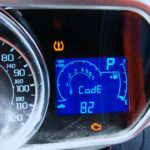
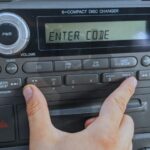
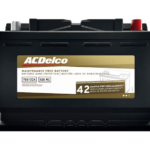
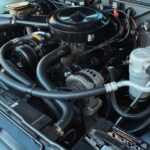
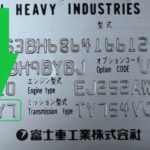

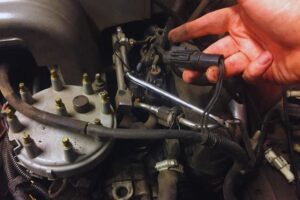
![Read more about the article Nissan Key Fob Battery Replacement – [How to Change It?]](https://roadsumo.com/wp-content/uploads/2022/11/Nissan-key-fob-battery-replacement-300x200.jpg)
